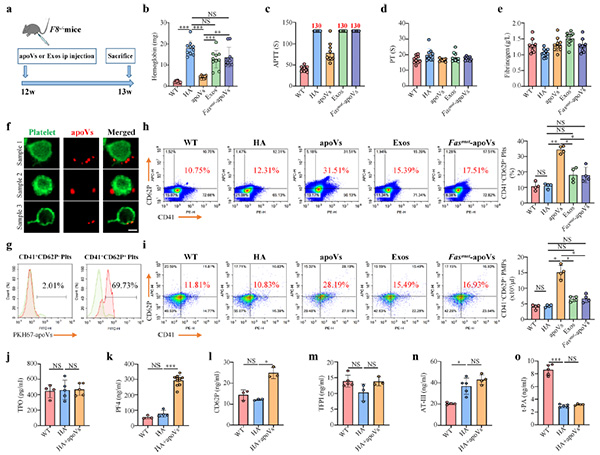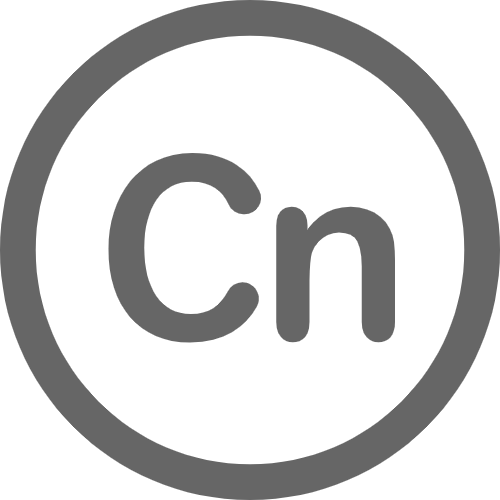With the multi-unit cooperation led by Peking University School and Hospital of Stomatology, Prof. Zhou Yongsheng and Prof. Shi Songtao’s teams systematically characterize the apoptotic vesicles derived from mesenchymal stem cells
Recently, a novel study, which was completed by Professor Zhou Yongsheng of Peking University School and Hospital of Stomatology and Professor Shi Songtao of South China Center of Craniofacial Stem Cell research (Sun Yat-sen University), has been published in “Journal of Extracellular Vesicles”, the top journal in the field of extracellular vesicles. This study, for the first time, systematically characterized the detailed characteristics, specific surface markers, and biological characteristics of apoptotic vesicles derived from mesenchymal stem cells, and clarified the role and mechanism of apoptotic vesicles on activating platelets and treating haemophilia A.
Apoptosis is a form of programmed cell death that accounts for normal cell turnover in the human body. Billions of cells undergo apoptosis in the human body per day as an essential metabolic activity to maintain tissue and organ homeostasis. During apoptosis, cells undergo a series of biological processes, including cell shrinkage, chromatin condensation, membrane blebbing, and protrusion, ultimately secreting a large number of apoptotic vesicles (apoVs) containing proteins, DNAs, RNAs, lipids, and metabolites. Mesenchymal stem cells (MSCs) are non-hematopoietic stem cells with self-renewal and multipotent differentiation capabilities. MSC-based therapies are promising approaches for multiple diseases, such as osteoporosis, diabetes, etc. Intriguingly, MSC-derived apoVs may contribute to MSC-mediated therapeutic effects. We have demonstrated that infusion of MSC-derived apoVs ameliorates osteopenia via rescuing stem cell properties of endogenous MSCs, inhibits multiple myeloma cell growth and attenuates myeloma bone disease, and counteracts type 2 diabetes via restoring liver macrophage homeostasis. Nevertheless, the detailed characteristics of MSC-derived apoVs are unclear.
In this study, we characterized apoVs derived from three different types of MSCs through various approaches to identify their shape, size, density, surface molecule signature, and protein content. Through quantitative proteomic and bioinformatics analyses, we established a unique protein map of MSC-derived apoVs and identified the differences between apoVs and exosomes in terms of the functional protein cargo, corresponding pathway enrichment, and surface markers. Furthermore, we identified 13 proteins specifically enriched in apoVs compared to exosomes, which can be used as apoV-specific biomarkers.

Characteristics of apoptotic vesicles (apoVs) derived from mesenchymal stem cells (MSCs)
In addition, we showed that apoVs inherited apoptotic imprints such as Fas to ameliorate haemophilia A in factor VIII knockout mice via binding to the platelets’ FasL to activate platelet functions, and therefore rescuing the blood clotting disorder. In summary, we systemically characterized MSC-derived apoVs and identified their therapeutic role in haemophilia A treatment through a previously unknown Fas/FasL linkage mechanism.

ApoV infusion ameliorates hemostasis of haemophilia A mice via upregulating platelet activity
Xiao Zhang from Peking University School and Hospital of Stomatology and Jianxia Tang from Xiangya School of Stomatology, Xiangya Stomatological Hospital, Central South University are the co-first authors of this research article. Professor Zhou Yongsheng of Peking University School and Hospital of Stomatology and Professor Shi Songtao of South China Center of Craniofacial Stem Cell research (Sun Yat-sen University) are the co-corresponding authors. This work is supported by the National Natural Science Foundation of China, the Beijing Natural Science Foundation et al.
Zhou Yongsheng's research group has acquired many significant achievements in oral and maxillofacial tissue regeneration and restoration, especially in the research areas of stem cell biology, oral biomaterials, and digital medical devices and technologies for prosthodontics. He has published more than 150 papers in international authoritative journals, such as Journal of Extracellular Vesicles, Nano Today, Nano Energy, ASC Nano, Biomaterials, Bioactive Materials, Small, EMBO reports, etc., more than 110 papers in Chinese journals, and more than 50 national patents. Professor Zhou Yongsheng won the first prize of the science and technology award of the Chinese Stomatological Association and three Beijing Science and technology awards as the first person. He is responsible for more than 20 R&D projects, such as projects from National key R&D plan, National Natural Science Foundation (including key projects), national key clinical specialty construction projects, and provincial and ministerial projects.
Literature links:
http://dx.doi.org/10.1002/jev2.12240
last text: Review paper on Computer-assisted Surgery in Oral and Maxillofacial Oncology Published by …
next text: Researchers Xie Qiufei and Cao Ye of the Department of Prosthodontics reported new finding…






